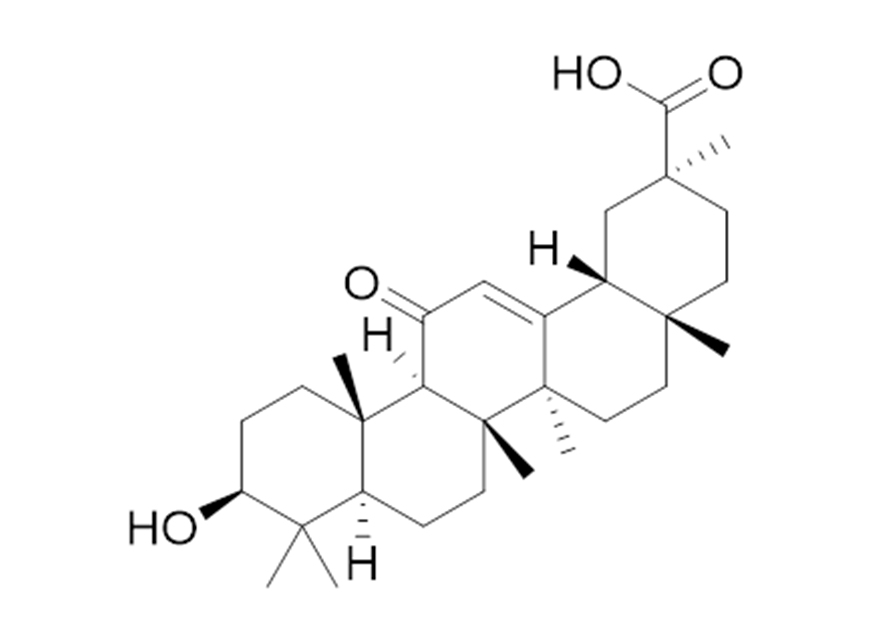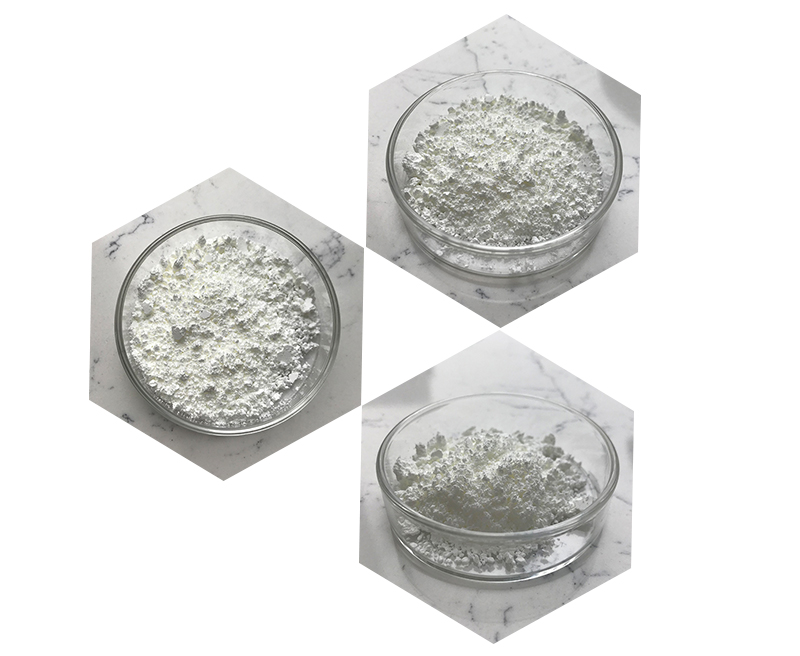Glycyrrhetinic acid, also known as glycyrrhizic acid aglycone, is a triterpenoid compound derived from the hydrolysis of glycyrrhizin, a major constituent of licorice root (Glycyrrhiza glabra). Its chemical formula is C30H46O4.
Structural Information:
IUPAC Name: (3β)-3-Hydroxy-11-oxo-18α,20β-olean-12-en-29-oic acid
Molecular Formula: C30H46O4
Molecular Weight: 470.68 g/mol
SMILES: C[C@]12CC[C@@H]3C@@H[C@@]1(C)C@@HO
InChI:InChI=1S/C30H46O4/c1-28-11-7-17(31)15-23(28)19(33)13-20-25-16(18-6-5-12-29(20,18)2)8-10-26(3)27(25,4)21(28)9-14-30(26,34)24(32)22(35)4/h6,11-12,15-16,19-22,25,32,34H,5,7-10,13-14H2,1-4H3/t19-,20-,21+,22-,25-,26+,27+,28+,29+,30-/m1/s1

Physical Properties of Glycyrrhetinic Acid
Appearance:
Glycyrrhetinic acid is a white to off-white powder.
Melting Point:
Approximately 292-295°C (557.6-563°F)
Solubility:
It is sparingly soluble in water but more soluble in organic solvents such as ethanol, methanol, and chloroform.
Optical Rotation:
[α]D +178° (c=1 in ethanol)
Key Properties and Uses:
Anti-inflammatory: Glycyrrhetinic acid exhibits significant anti-inflammatory properties by inhibiting enzymes such as 11β-hydroxysteroid dehydrogenase, which converts active cortisol to its inactive form, cortisone.
Antiviral: It has been shown to possess antiviral activity, particularly against hepatitis C virus (HCV).
Antitumor: Research indicates potential antitumor activity through various mechanisms including apoptosis induction and inhibition of tumor growth.
Dermatological Applications: Due to its anti-inflammatory and soothing properties, it is used in creams and ointments for skin conditions like eczema and psoriasis.
Ulcer Treatment: It can be used for the treatment of peptic ulcers owing to its healing properties.

Safety and Toxicity:
Glycyrrhetinic acid can lead to side effects such as hypertension and hypokalemia (low potassium levels) due to its action on mineralocorticoid receptors, which can cause increased sodium retention and potassium excretion. Therefore, its usage should be monitored, particularly in individuals with cardiovascular issues or those on certain medications.
Understanding the chemical structure and physical properties of glycyrrhetinic acid is crucial for its application in pharmacology and various therapeutic uses.
